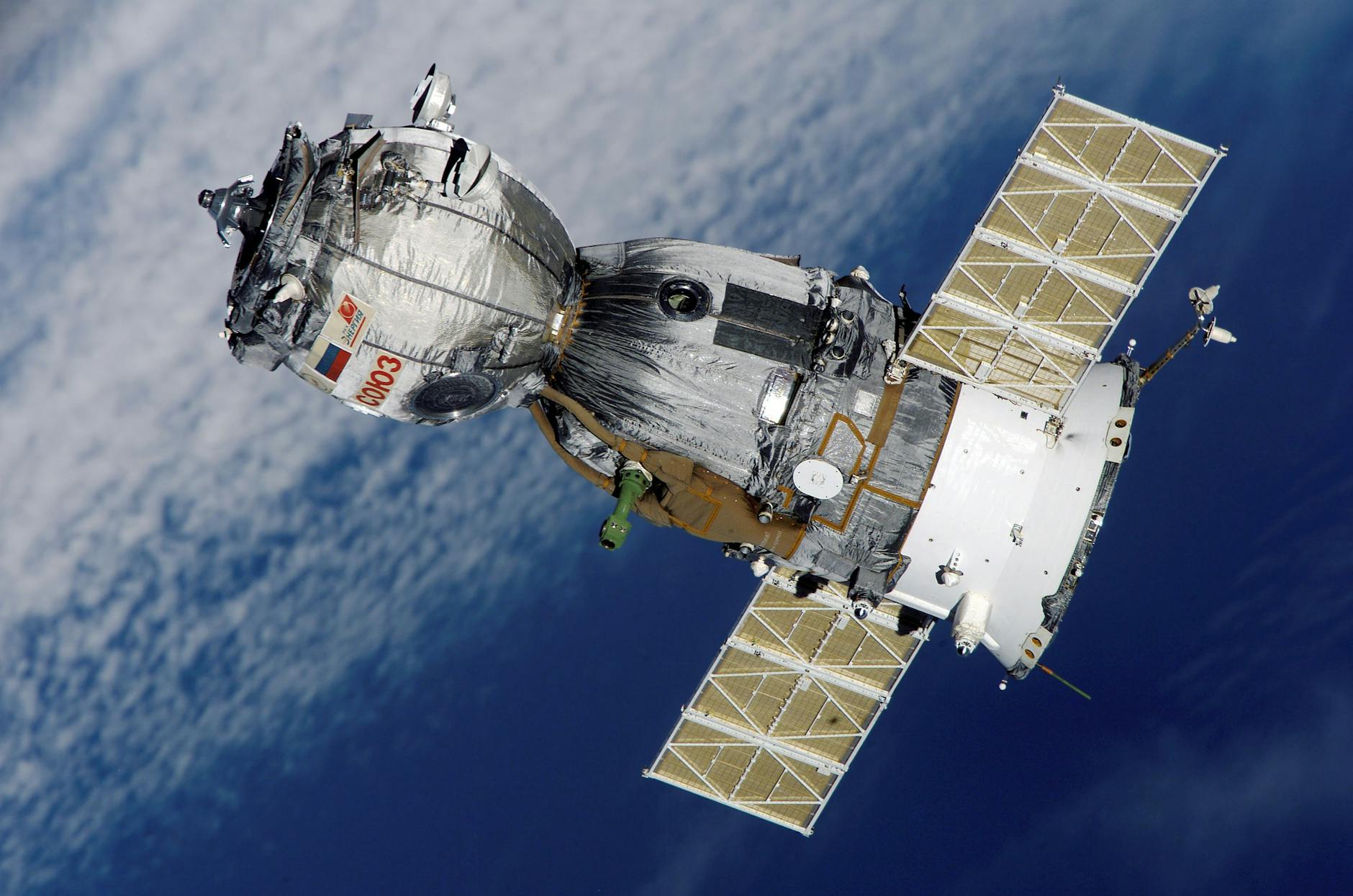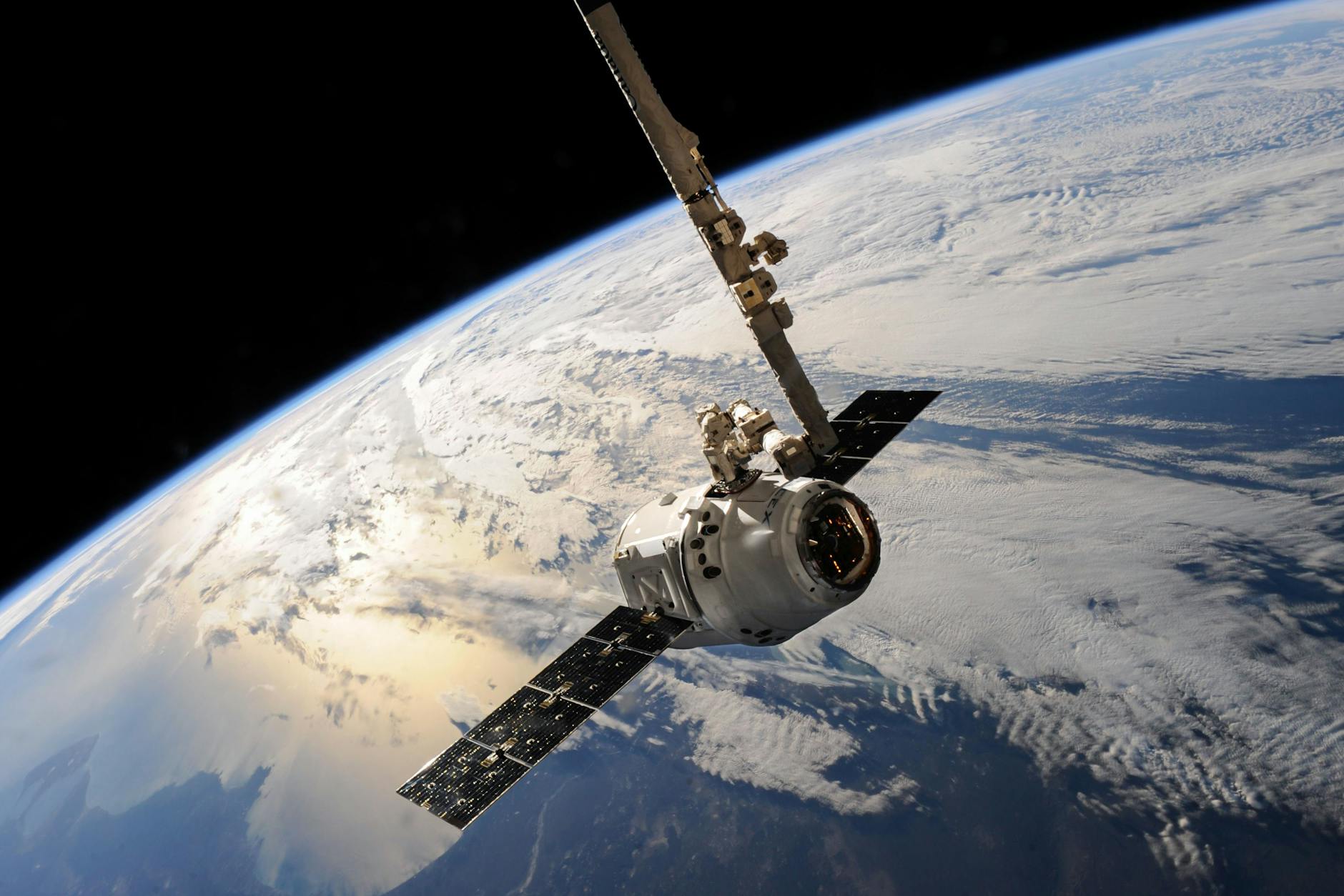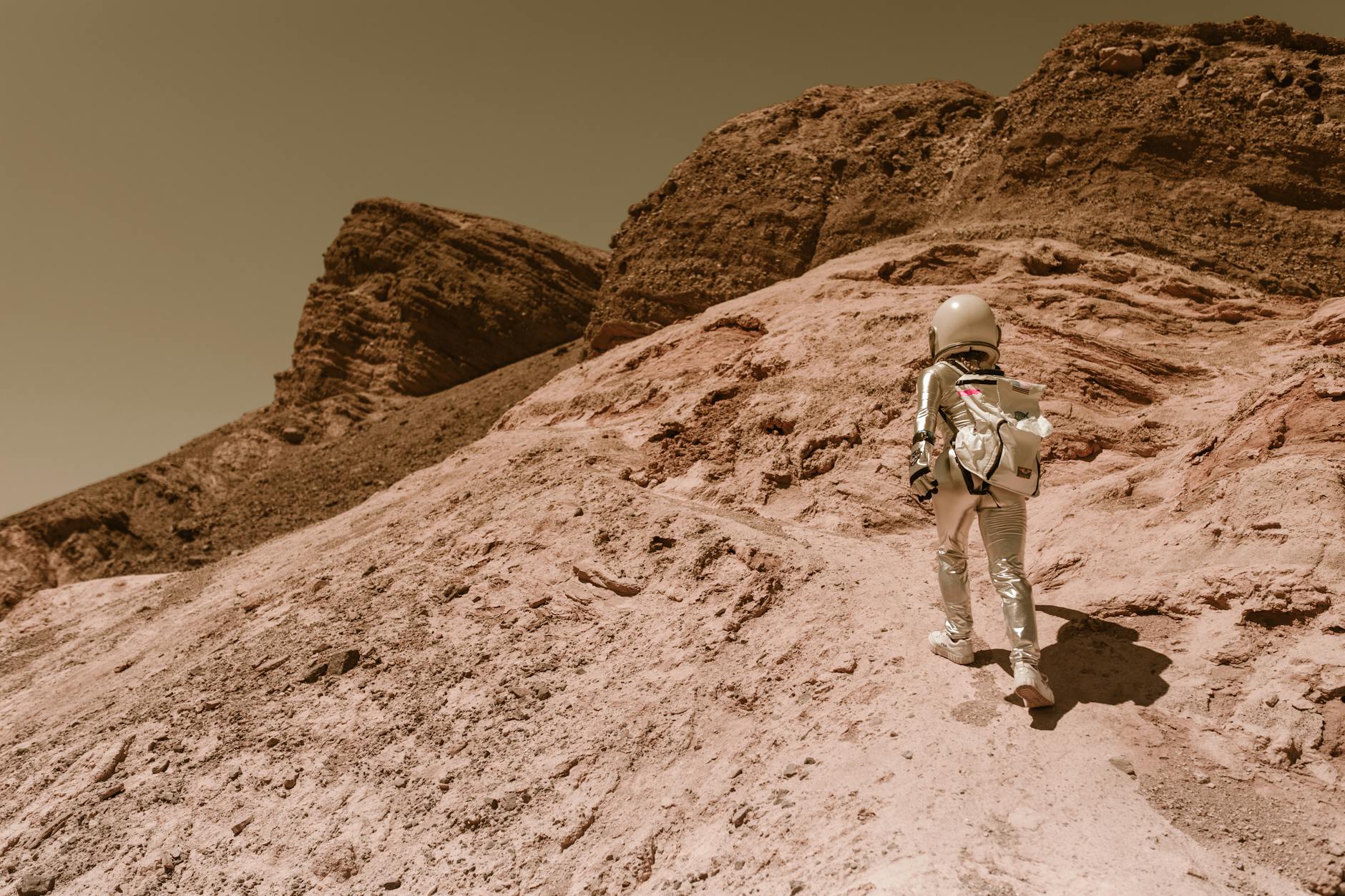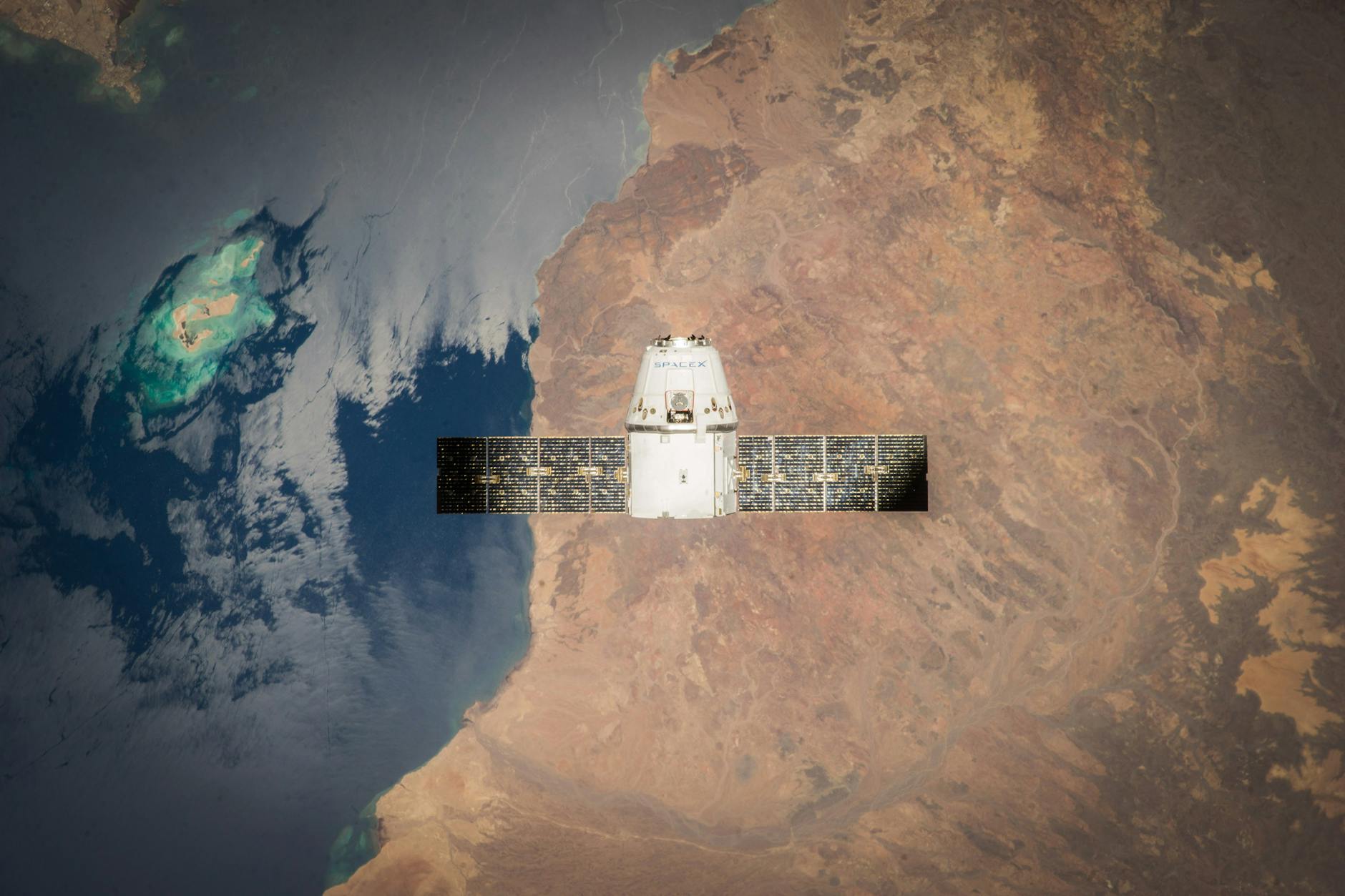
Have you ever gazed up at the night sky and spotted a moving light, wondering how it stays up there? 🛰️ That’s likely a satellite, quietly orbiting Earth and defying gravity. But how do these marvels of technology manage to stay aloft without plummeting back to our planet? It’s a question that has fascinated scientists and stargazers alike for decades.
The answer lies in a delicate balance of forces and precise calculations. Satellites aren’t just flung into space and left to their own devices. They’re carefully placed in specific orbits, hurtling through the vacuum at mind-boggling speeds. It’s this perfect combination of velocity and altitude that keeps them circling our planet, seemingly suspended in the vast expanse of space.You may be wondering how do satellites stay in orbit.? Thousands of such questions may come in your mind . Thousands of such questions will be answered in our blog post. So read our blog post and expand your ocean of knowledge by acquiring the right knowledge.
In this blog post, we’ll unravel the mysteries of orbital mechanics, explore the factors that keep satellites in their celestial dance, and delve into the different types of orbits these artificial moons occupy. We’ll also examine how do satellites stay in orbit and how satellite orbits are maintained and the challenges that threaten their stability. So buckle up and prepare for a journey into the realm of space technology that’s quite literally out of this world!
Some more satellites related blog :
How do satellites maintain orbit around the Earth?
Physics behind how satellites stay in orbit around the Earth .
How do satellites stay in orbit without fuel?
What Happens to Old Satellites?
Understanding Orbital Mechanics :

A. The balance of gravity and velocity
Satellites stay in orbit due to a delicate balance between gravity and velocity. Earth’s gravitational pull constantly attracts satellites towards its center, but their high velocity prevents them from falling. This equilibrium creates a continuous free-fall state, allowing satellites to maintain their orbits.
B. Centripetal force explained
Centripetal force plays a crucial role in keeping satellites in orbit. This force acts perpendicular to the object’s motion, constantly pulling it towards the center of its circular path. For satellites, Earth’s gravity provides this centripetal force, causing them to follow a curved path around the planet.
| Force | Direction | Effect on Satellite |
|---|---|---|
| Gravity | Towards Earth’s center | Provides centripetal force |
| Velocity | Tangential to orbit | Maintains forward motion |
C. Escape velocity and its significance
Escape velocity is the minimum speed an object needs to break free from Earth’s gravitational pull. For satellites, achieving the right balance between velocity and altitude is crucial:
- Too slow: The satellite falls back to Earth
- Too fast: The satellite escapes Earth’s orbit
- Just right: The satellite maintains a stable orbit
Factors affecting escape velocity:
- Distance from Earth’s center
- Earth’s mass
- Satellite’s mass
Understanding these orbital mechanics principles is essential for designing and launching satellites that can maintain stable orbits around Earth.

Factors Keeping Satellites in Orbit
A. Initial Launch and Positioning
The journey of a satellite begins with its launch. Powerful rockets propel satellites into space, providing the initial velocity needed to reach their designated orbits. The precise calculation of launch trajectory and timing is crucial for positioning satellites correctly.
B. Altitude and Orbital Speed Relationship
A critical factor in maintaining a satellite’s orbit is the relationship between its altitude and orbital speed. This relationship can be summarized in the following table:
| Altitude | Orbital Speed | Orbit Period |
|---|---|---|
| Low Earth Orbit (LEO) | ~7.8 km/s | ~90 minutes |
| Medium Earth Orbit (MEO) | ~4.6 km/s | ~12 hours |
| Geostationary Orbit (GEO) | ~3.1 km/s | 24 hours |
C. Earth’s Gravitational Pull
Earth’s gravity plays a dual role in satellite orbits. While it constantly pulls satellites towards the planet, it also helps maintain their circular path. The balance between the satellite’s forward motion and Earth’s gravitational pull creates a stable orbit.
D. Atmospheric Drag and Its Minimal Effect at High Altitudes
At higher altitudes, satellites experience minimal atmospheric drag due to the extremely thin atmosphere. This reduced drag allows satellites to maintain their orbits for extended periods. However, even at these altitudes, some factors can affect orbital stability:
- Solar radiation pressure
- Gravitational influences from the Moon and Sun
- Variations in Earth’s gravitational field
Now that we understand the factors keeping satellites in orbit, let’s explore the various types of satellite orbits and their specific characteristics.
Types of Satellite Orbits
Satellites orbit Earth at various altitudes, each serving specific purposes. Let’s explore the main types of satellite orbits and their unique characteristics:
Low Earth Orbit (LEO)
LEO satellites operate at altitudes between 160-2,000 km above Earth’s surface. They offer:
- Minimal communication delay
- High-resolution Earth observation
- Reduced launch costs
Popular uses include:
- International Space Station
- Earth observation satellites
- Some communication constellations (e.g., Starlink)
Medium Earth Orbit (MEO)
MEO satellites orbit between 2,000-35,786 km, balancing coverage and latency:
- Wider coverage than LEO
- Shorter signal delay than higher orbits
- Commonly used for navigation systems
| Orbit Type | Altitude Range | Key Applications |
|---|---|---|
| LEO | 160-2,000 km | Earth observation, communications |
| MEO | 2,000-35,786 km | Navigation, some communications |
Geostationary Orbit (GEO)
GEO satellites orbit at approximately 35,786 km, matching Earth’s rotation:
- Appear stationary from Earth
- Provide constant coverage of a specific area
- Ideal for weather monitoring and TV broadcasting
Polar and Sun-synchronous Orbits
These specialized orbits offer unique advantages:
- Polar orbits pass over Earth’s poles
- Sun-synchronous orbits maintain consistent lighting conditions
Both are crucial for:
- Global environmental monitoring
- Weather forecasting
- Military reconnaissance
Now that we’ve explored the various types of satellite orbits, let’s examine how these orbits are maintained over time.

Maintaining Satellite Orbits :
Now that we understand the factors keeping satellites in orbit and the various types of orbits, let’s explore how these orbits are maintained over time.
Periodic Orbit Corrections
Satellites require regular adjustments to maintain their intended orbits. These corrections are essential due to various perturbations that can affect a satellite’s trajectory:
- Atmospheric drag
- Solar radiation pressure
- Gravitational forces from other celestial bodies
| Perturbation | Effect on Satellite | Correction Method |
|---|---|---|
| Atmospheric drag | Slows satellite, lowers orbit | Boost to higher altitude |
| Solar radiation | Changes orbit shape | Adjust orientation |
| Gravitational forces | Alters orbit inclination | Propulsion maneuvers |
Onboard Propulsion Systems
To perform orbit corrections, satellites are equipped with sophisticated propulsion systems:
- Chemical thrusters
- Electric propulsion
- Cold gas thrusters
These systems allow satellites to make precise adjustments to their velocity and position, ensuring they remain in the desired orbit.
Station-Keeping Maneuvers
Station-keeping refers to the specific maneuvers performed to maintain a satellite’s position relative to Earth or other satellites in the same orbital plane. These maneuvers are crucial for:
- Geostationary satellites maintaining their fixed position above Earth
- Constellation satellites preserving their relative spacing
The frequency and complexity of station-keeping maneuvers depend on the satellite’s orbit and mission requirements. With these maintenance techniques, satellites can remain operational for years, providing vital services to Earth-based users.
The Science of Satellite Orbits and Their Stability
Satellites remain in orbit due to a balance between gravity and their forward velocity. Earth’s gravity pulls the satellite inward, acting as a centripetal force, while its speed prevents it from falling back to the ground. This creates a stable path, allowing the satellite to “fall around” the Earth continuously.
The altitude of a satellite determines its speed and orbit type. Low Earth Orbits (LEO), at 200–2,000 km altitude, require speeds of about 7.8 km/s and complete a revolution in roughly 90 minutes. Higher orbits, like geostationary orbits at 35,786 km, move slower and match Earth’s rotation, keeping the satellite fixed over one spot.
To maintain stability, satellites use small thrusters to correct disturbances from atmospheric drag or gravitational influences. This balance of forces ensures satellites can operate reliably for years, supporting communication, navigation, and scientific research.

Challenges to Satellite Stability :
Satellites face several obstacles in maintaining their orbits, and understanding these challenges is crucial for ensuring their longevity and effectiveness. Let’s explore the main factors that can impact satellite stability:
A. Solar radiation pressure
Solar radiation pressure, though seemingly insignificant, can have a substantial effect on satellite orbits over time. This phenomenon occurs when photons from the Sun collide with the satellite’s surface, exerting a small but constant force. The impact varies depending on the satellite’s size, shape, and reflectivity.
- Effects of solar radiation pressure:
- Orbital drift
- Changes in eccentricity
- Alteration of inclination
B. Gravitational influences from the Moon and Sun
While Earth’s gravity is the primary force keeping satellites in orbit, the gravitational pull of the Moon and Sun can cause perturbations. These influences are particularly significant for satellites in higher orbits.
| Celestial Body | Primary Effect on Satellites |
|---|---|
| Moon | Orbital plane precession |
| Sun | Long-term orbital changes |
C. Space debris and collision risks
The increasing amount of space debris poses a severe threat to satellite stability and longevity. Collisions with even small objects can cause significant damage or complete satellite failure.
- Types of space debris:
- Defunct satellites
- Spent rocket stages
- Fragments from collisions or explosions
To mitigate these risks, space agencies and satellite operators employ various strategies, including debris tracking systems and collision avoidance maneuvers. As we continue to rely more heavily on satellite technology, addressing these challenges becomes increasingly important for maintaining our space-based infrastructure.
How Do Satellites Stay in Orbit for Years ?
Satellites remain in orbit for years due to a delicate balance between Earth’s gravity and their speed. Gravity pulls the satellite toward Earth, acting as a centripetal force, while the satellite’s forward velocity ensures it doesn’t crash but instead “falls around” the planet.
Satellites are launched at precise speeds and altitudes to achieve stable orbits. For example, in Low Earth Orbit (LEO), a satellite travels at about 7.8 km/s to counteract gravity. Higher orbits, like geostationary ones, require slower speeds.
To maintain their position, satellites use small thrusters to correct for minor disturbances, such as atmospheric drag in lower orbits or gravitational tugs from the Moon and Sun. When a satellite’s fuel runs out or it becomes obsolete, it is either deorbited to burn up in the atmosphere or moved to a graveyard orbit.
This intricate balance allows satellites to operate reliably for years, providing essential services like communication, navigation, and Earth observation.

Satellites remain in orbit due to a delicate balance between gravity and their forward motion. This equilibrium, governed by orbital mechanics, allows these crucial technological marvels to circle the Earth without falling back or drifting away. Various factors, including altitude, speed, and the Earth’s gravitational pull, work together to keep satellites in their designated orbits, whether they’re in low Earth orbit or geostationary positions.
As we continue to rely on satellites for communication, navigation, and scientific research, understanding and maintaining their orbits becomes increasingly important. By addressing challenges such as atmospheric drag and space debris, we can ensure the longevity and effectiveness of our satellite networks. The fascinating world of satellite technology serves as a testament to human ingenuity and our ongoing exploration of the cosmos.













